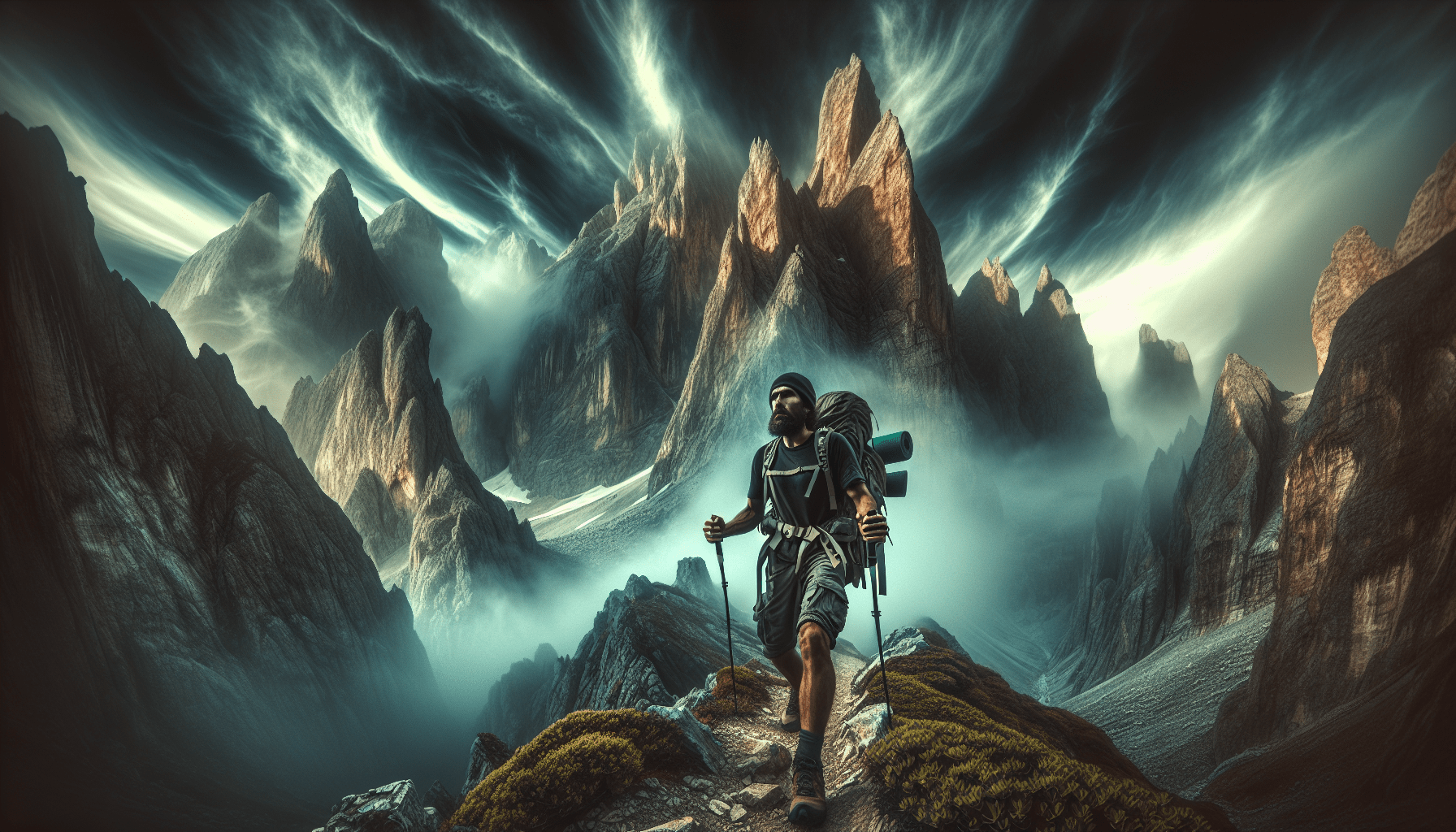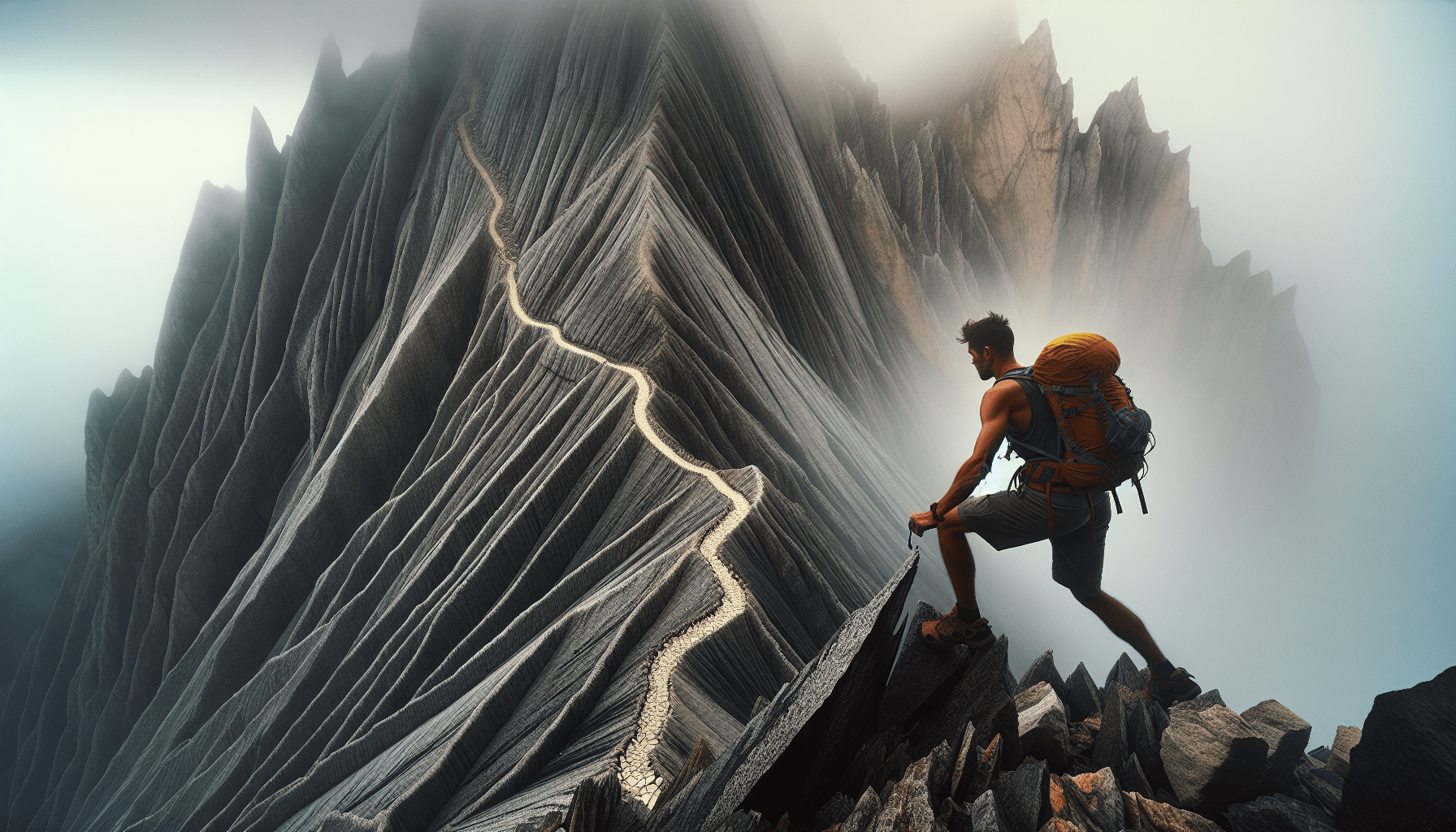BAGSMART Clear Toiletry Bag, 2 Packs TSA Approved Water resistant Quart Size Travel Organizer, Airport Airline Travel Essential Carry On Makeup Cosmetic Bags for Women, Black
$7.59 (as of April 23, 2025 06:52 GMT +00:00 - More info)Extreme hiking is an exhilarating yet formidable challenge that takes you through some of the world’s most perilous and breathtaking trails. In “Extreme Hiking: Exploring the World’s Most Dangerous Trails,” you’ll discover the heart-pounding paths of Huayna Picchu in Peru, the narrow and vertigo-inducing El Caminito del Rey in Spain, and the historic Via Ferrata straddling Italy and Austria. These daring terrains put both your physical stamina and mental fortitude to the ultimate test. From the “Heavenly Stairs” of Mount Hua in China to the volatile Mount Pinatubo in the Philippines, each trail offers its unique set of hazards, including towering heights, unpredictable weather, and absolute remoteness. With detailed insights into proper gear and expert recommendations for safer hiking experiences, this article prepares you not just to survive, but to thrive on these extraordinary adventures. Have you ever wondered what it takes to tackle some of the world’s most dangerous hiking trails? If you have a thirst for adventure and a love for the great outdoors, extreme hiking might just be your perfect challenge. This exhilarating activity tests both your physical and mental endurance and takes you through some of the most breathtaking yet perilous landscapes on earth.
Extreme Hiking: Exploring the World’s Most Dangerous Trails
Shop These Accessories for a Comfortable Trip
What is Extreme Hiking?
Extreme hiking isn’t your run-of-the-mill walk in the park. It involves traversing intense and often hazardous trails that demand exceptional physical and mental stamina. These trails offer not just natural beauty but a myriad of challenges, from steep climbs to unpredictable weather conditions.
Why Take On Extreme Hiking?
Why would anyone choose to hike these dangerous trails? For many, it’s about pushing personal boundaries and experiencing nature’s raw power up close. It’s a chance to escape the mundane and embrace the exhilaration that comes from navigating some of the toughest terrain on the planet. For others, the reward lies in the spectacular vistas that can only be viewed from these remote, hard-to-reach places.

Shop These Accessories for a Comfortable Trip
Some of the Most Dangerous Hikes in the World
Let’s take a closer look at some of the trails that make extreme hiking such an adrenaline-pumping adventure.
Huayna Picchu, Peru
Huayna Picchu is notorious for its steep steps and challenging conditions. The trail may be tough, but the reward is a nearly surreal view of the ancient city of Machu Picchu from above. Often shrouded in mist, the trail involves narrow pathways and dizzying heights that make it a truly harrowing experience.
- Location: Near Machu Picchu, Peru
- Difficulty Level: High
- Key Features: Steep staircases, narrow paths, breathtaking views
El Caminito del Rey, Spain
Known as the “King’s Little Pathway,” El Caminito del Rey is famous for its narrow gorge paths suspended high above the ground. The trail has undergone restoration, but it still remains one of the world’s most perilous hikes, requiring a head for heights and a keen sense of balance.
- Location: Malaga, Spain
- Difficulty Level: Moderate to High
- Key Features: Narrow paths, suspension bridges, stunning gorge views
Via Ferrata, Italy and Austria
Via Ferrata is a network of mountain paths and walkways equipped with steel cables for security. Originally used during World War I, these trails offer extreme hiking in a historical context, combined with the physical challenge of navigating rugged, vertical terrain.
- Location: Dolomites, Italy and Austrian Alps
- Difficulty Level: Varies
- Key Features: Steel cables, historical significance, steep ascents
Mount Hua, China
Mount Hua is famous for its “Heavenly Stairs” and perilous plank paths that cling to the mountainside. Not for the faint-hearted, this trail involves vertigo-inducing climbs and descents, offering hikers astonishing views and a real test of nerve.
- Location: Shaanxi Province, China
- Difficulty Level: High
- Key Features: Plank paths, steep stairs, incredible landscape views
Mount Pinatubo, Philippines
Mount Pinatubo is an active stratovolcano with a notorious history of dangerous eruptions. The hike to the crater involves traversing challenging terrain and being prepared for potentially volatile volcanic conditions.
- Location: Luzon Island, Philippines
- Difficulty Level: Moderately High
- Key Features: Volcanic landscape, hiking to the crater, geothermal activity
The Maze, USA
Located in Canyonlands National Park, The Maze is infamous for its complex navigation, with labyrinthine canyons that can make even seasoned hikers lose their way. The area is prone to rockfalls and flash floods, adding to the ordeal.
- Location: Utah, USA
- Difficulty Level: High
- Key Features: Complex navigation, remote location, risk of natural hazards
Drakensberg Traverse, South Africa
The Drakensberg Traverse is a visually stunning yet highly dangerous trail due to its elevation and challenging conditions. Known for its high mortality rate from falls, this hike offers both the beauty and the beast of extreme hiking.
- Location: KwaZulu-Natal, South Africa
- Difficulty Level: Very High
- Key Features: Altitude, rugged terrain, remote and isolated path
Mount Washington, USA
Mount Washington in New Hampshire is notorious for its erratic weather conditions, which have claimed over 100 lives. The unpredictable climate changes combined with steep, rocky sections make this a particularly grueling hike.
- Location: New Hampshire, USA
- Difficulty Level: Moderately High
- Key Features: Erratic weather, high fatality rate, rugged terrain
Characteristics of Extreme Hiking
Extreme hiking isn’t for everyone, but if you’re up for the challenge, there are a few characteristics you should be aware of.
Long Distances
Extreme hikes often cover significant distances. It’s not uncommon to exceed 20 miles in a single day. This requires not only physical endurance but also a good pace and the ability to keep moving despite fatigue.
- Sample Distance: 20+ miles
- Physical Requirement: High endurance
- Mental Focus: Sustained concentration
Significant Elevation Gains
These hikes usually involve significant elevation gains, which can lead to altitude sickness if you’re not well-prepared. Adjustment to altitude and fitness levels play crucial roles in your ability to manage steep ascents and descents.
- Elevation Gain: Up to thousands of feet
- Risk: Altitude sickness
- Fitness Level: Highly fit and acclimated
Rough and Uneven Terrain
From rocky paths to steep climbs, the terrain on extreme hikes is often uneven and unpredictable. Proper footwear and preparation are essential to navigate these challenging surfaces safely.
- Terrain Type: Rocky, steep, uneven
- Equipment Needed: Sturdy hiking boots, trekking poles
- Skill Level: Experienced hiker
Unpredictable and Extreme Weather Conditions
Weather can change in the blink of an eye on these trails, adding another layer of danger. From sudden storms to quickly falling temperatures, being prepared for all types of weather is crucial.
- Weather Conditions: Highly variable
- Preparation: Multi-layered clothing, gear for all weather
- Awareness: Constant monitoring of weather updates
Isolation and Remote Locations
Many extreme hikes take place in isolated and remote locations, making emergency help scarce. This means that you have to be self-sufficient and capable of handling medical or other emergencies on your own.
- Location: Remote and isolated
- Emergency Services: Minimal to none
- Preparedness: First-aid training, emergency kits

Preparing for an Extreme Hike
Preparation is key when it comes to extreme hiking. Here are some guidelines to ensure you’re ready for the challenge.
Gear Up
The right gear can make all the difference. Invest in high-quality, durable equipment designed for extreme conditions.
| Essential Equipment | Description |
|---|---|
| Hiking Boots | Sturdy, ankle-supporting boots for difficult terrain |
| Trekking Poles | Help with balance and reduce strain on joints |
| Weather-Appropriate Clothing | Layered clothing for adaptability to changing conditions |
| Navigation Tools | Map, compass, and GPS for complex trails |
| Hydration System | CamelBak or water bottles to stay hydrated |
| First-Aid Kit | Basic medical supplies for emergencies |
| Emergency Shelter | Lightweight bivy or space blanket for unexpected overnights |
Training and Fitness
Extreme hiking requires top-notch physical conditioning. A good training regimen would include cardiovascular exercises, strength training, and flexibility workouts.
- Cardiovascular Fitness: Running, cycling, and swimming
- Strength Training: Focus on legs, core, and back muscles
- Flexibility: Yoga or stretching to prevent injuries
- Endurance: Long-distance hiking practice
Research
Knowledge is power. Research your chosen hike meticulously. Know the terrain, weather conditions, potential hazards, and available resources.
- Terrain Study: Topographic maps, trail guides
- Weather Tracking: Historical data, forecasts
- Hazard Awareness: Understand local wildlife, terrain risks
- Local Resources: Emergency contacts, rescue services
Safety Tips for Extreme Hiking
Safety should always be your top priority. Here are some tips to keep you safe on your extreme hiking adventures.
Always Inform Someone
Always make sure someone knows your hiking plan, including the route, expected duration, and check-in times.
- Inform: Friends or family
- Details: Trail, duration, check-in times
- Emergency Contact: Emergency numbers, local authorities
Carry Emergency Supplies
Be self-sufficient. Carry extra food, water, and emergency supplies, such as a first-aid kit, fire starter, and emergency shelter.
- Food: High-energy snacks
- Water: Purification tablets, extra water supply
- Emergency Gear: First-aid kit, emergency shelter, fire starter
Know Your Limits
Listen to your body and know when to turn back. It’s better to be safe and come back another day than to push yourself into a dangerous situation.
- Self-Awareness: Monitor your physical and mental state
- Decision-Making: Be decisive in turning back if conditions worsen
- Mental Health: Stay calm and focused
Guides and Recommendations for Safe Hiking
If you’re new to extreme hiking, consider starting with guided tours or easier trails. There are plenty of resources available to help you get started safely.
Guided Tours
Joining a guided tour can provide you with expert knowledge and increase your safety.
- Expert Guides: Professionals to lead the way
- Safety Gear: Provided and checked by the guide
- Camaraderie: Shared experience with fellow hikers
Beginner Trails
Starting with more manageable trails can help build your skills and confidence.
- Moderate Difficulty: Trails that are challenging but not extreme
- Skill Development: Opportunity to learn essential hiking skills
- Confidence Building: Gradual increase in difficulty
Essential Clothing and Gear
Specific items like sun-protective shirts and sufficient food supplies can make a big difference.
- Protective Clothing: Sun-protective shirts, hats
- Food Supplies: High-calorie, nutritious snacks for sustained energy
- Hydration: Importance of staying well-hydrated
Conclusion
Extreme hiking offers an unmatched adrenaline rush and the promise of awe-inspiring views. However, with these rewards come significant risks. Proper preparation, the right gear, and a cautious approach are your best allies in navigating these challenging trails. So, the next time you’re itching to explore the great outdoors in all its unfiltered beauty, remember to respect the trail, know your limits, and always hike safe. Whether it’s the steep steps of Huayna Picchu or the narrow paths of El Caminito del Rey, the world is full of extreme hiking adventures waiting for you. Are you ready to take the plunge?
Shop These Accessories for a Comfortable Trip






